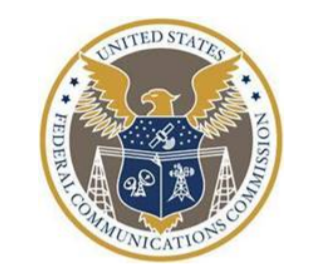In one of the most rancorous votes at Tuesday’s FCC meeting, Commissioners decided to streamline the agency’s rules for compound expansion at existing tower sites; the goal is to speed wireless infrastructure deployment. The item passed 3-2 along party lines.
In the Report and Order, the Commission revised its rules implementing section 6409(a) of the Spectrum Act of 2012, which says that state and local governments may not deny certain requests to modify existing wireless structures that do not substantially change the physical dimensions of the structures. The revised rules state that excavating or deploying transmission equipment in an area no more than 30 feet beyond existing site boundaries would not disqualify the modification from section 6409(a) treatment.
During the meeting, FCC officials explained that the Report and Order will make it easier to co-locate antennas and associated equipment on existing infrastructure, while preserving state and local government’s ability to manage and protect local land-use interests.
Commissioner Michael O’Rielly said this has been an issue for industry since his earliest days at the FCC. In numerous meetings, towercos and trade associations cited “examples of local governments, historic preservation boards, and tribal nations continuously placing unnecessary barriers in the way” of site upgrades. “Sometimes, there was even a reluctance to share their experiences,” said O’Rielly, because of the “potential for negative blowback.”
“One would think tower opponents would support efforts to use existing towers instead of building additional ones, which some find unsightly,” added O’Rielly. Despite previous Commission efforts and even help from Congress, “to facilitate co-location, the wireless industry still faced and continues to face ridiculous hurdles.” All this, in the face of calls for network expansion and resiliency, he said.
The Wireless Infrastructure Association and CTIA asked for the changes.
“We will now allow 30 feet of site expansion consistently across our environmental, historic preservation, and local approval rules,” said Commissioner Brendan Carr. He spoke about a tower visit last week in Virginia with Tam Murray, founder of Community Wireless Structures. “Tam showed me where he wants to expand his fence to make room for backup power,” said Carr. “Trees cover that area and it is notoriously difficult to keep the power on during storms. While a house without power might be a manageable inconvenience for some, a tower without power can cut off wireless service for miles around.”
Carr added: “Tam also needs more space to expand capacity. Wireless providers are adding more equipment to towers to light up the massive amount of spectrum this Commission has brought to market.”
Examples he cited include FirstNet, which Carr said has contracted for new backup power at cell sites across the country. And the California Public Utilities Commission this year mandated 72 hours of backup power at sites statewide, he said.
Commission Democrats Jessica Rosenworcel and Geoffrey Starks opposed the item. Rosenworcel said a 30-foot change is not minor. “It stretches credulity to suggest that excavation or deployment of up to 30 feet outside the boundaries of a tower compound does not ‘substantially change the physical dimensions’ of that site,” said Rosenworcel. “Thirty feet is five refrigerators laid out one after the other. It’s half the size of a bowling lane.”
She noted the decision doesn’t bode well for the future relations between the FCC and localities. “When we proceed like this, we create genuinely unhelpful friction between state and local interests who have filed en masse in this proceeding to protest how this agency is diminishing their authority. By doing so, we reduce the opportunity to foster the kind of partnerships between providers and state and local authorities that can help build smart cities—where connectivity will help improve the quality of life,” said Rosenworcel.
Smart Cities “can mean everything from adaptive traffic signals to increased energy efficiency to improved waste management to more data-driven problem solving in real time. But we won’t get there anytime soon if this agency keeps reading the statute in a way that leaves state and local authorities aggrieved that they lack a say in what is built in their own backyards,” she said.
Starks said the decision may encourage applicants to evade local zoning laws by seeking approval for less space than they need, and then obtaining streamlined processing for expansion beyond that area.
By Leslie Stimson, Inside Towers Washington Bureau Chief





Reader Interactions